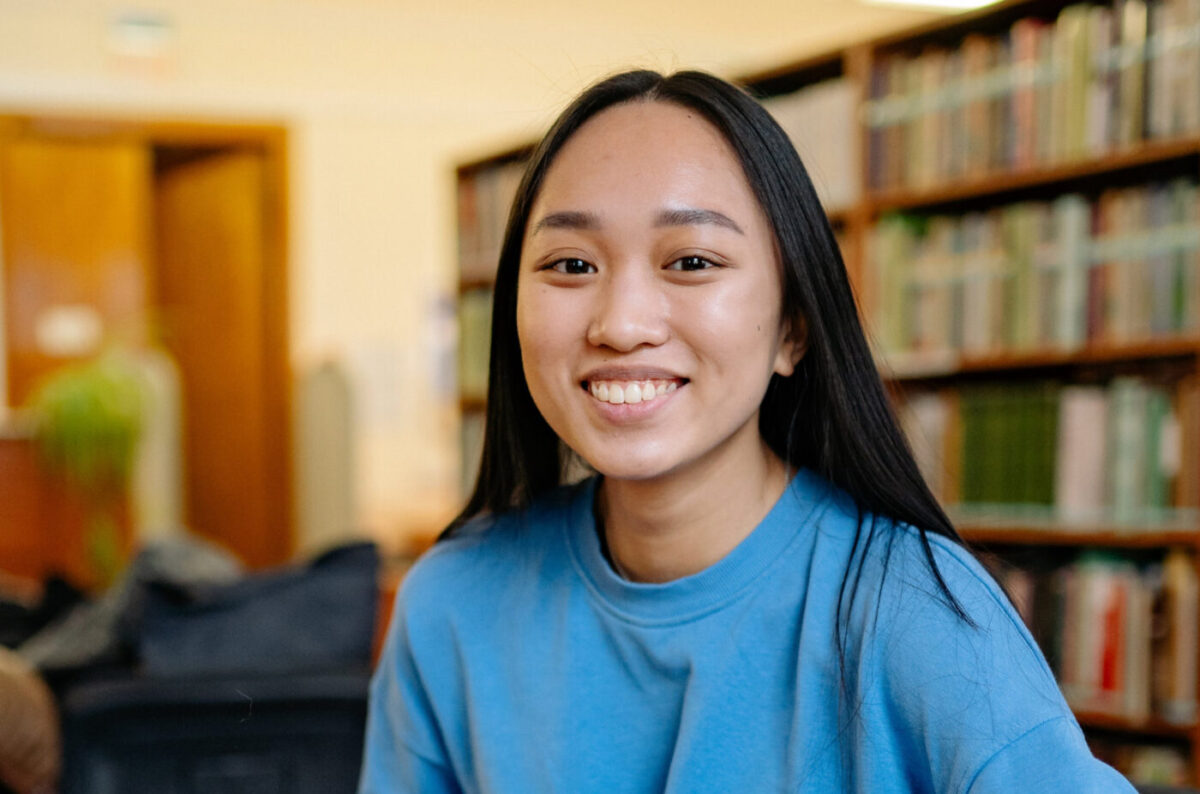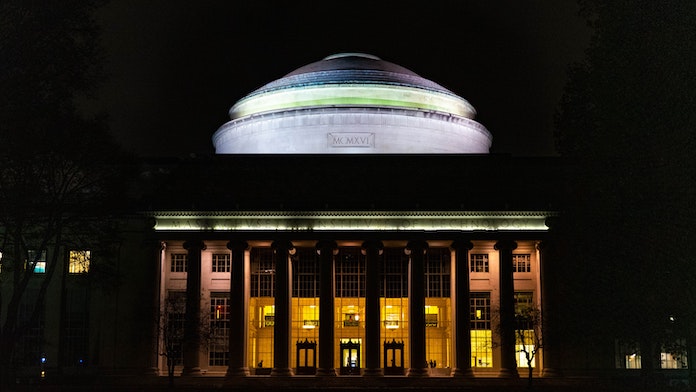Founded in 1861 to accelerate the nation’s industrial revolution, MIT’s motto is “mens et manus,” or “mind and hand,” signifying the fusion of academic knowledge with practical purpose. Truly without rival, MIT faculty and graduates have invented fundamental technologies, launched new industries, and created millions of American jobs. As noted on its website, “the MIT community is driven by a shared purpose: to make a better world through education, research, and innovation. We are fun and quirky, elite but not elitist, inventive and artistic, obsessed with numbers, and welcoming to talented people regardless of where they come from.”
Perhaps it comes as no surprise that MIT was once again (and for the 10th year in a row) named as the world’s top university by the QS World University Rankings, which were announced in early June.
WHAT MIT OFFERS
Whether your passions run from Aerospace Engineering to Women and Gender Studies or Computation and Cognition to Art, Culture, and Technology, MIT offers an exceptional educational experience distinguished by intensity, passion, collaboration, unconventional creativity, and unabashed nerdiness.
Are you fun and quirky, elite but not elitist, inventive and artistic and a high school student eager to tackle the world’s great challenges for the betterment of humankind? If so, read on!
MIT ACCEPTANCE RATE
MIT received an unprecedented 33,240 applications for undergraduate admission to the Class of 2025 (a 66 percent increase in applications from the prior year). In total, 1,340 students were offered admission for an overall admit rate of 4.0 percent (down from 7.3 percent for the Class of 2024). According to The Tech, MIT’s student newspaper, Stu Schmill, MIT’s Dean of Admissions, believes that the applicant pool primarily increased due to the “permanent elimination of the SAT Subject Tests from consideration” in the process, as well as the suspension of the “SAT/ACT requirement” because of the pandemic.
Who were those 1,340 students offered admission this year? How did their applications stand out in a pool filled with prospective students with well-documented interests in STEM? First, let’s look at how MIT Admissions defines its mission.
THE MIT MISSION
MIT’s approach to admissions honors the legacy of economist and MIT’s first admissions director, B. Alden Thresher (who wrote the legendary book College Admissions in the Public Interest). He stressed that admissions processes and policies mean little if the outcome of these efforts do not address what every college and university has articulated in its mission: to serve as a force for the betterment of society.
You can see Thresher’s influence today in the MIT Admissions mission statement:
- The MIT Office of Admissions enrolls a talented and diverse undergraduate study body composed of some of the world’s most intelligent and creative individuals interested in an education centered on science and technology.
- The students we enroll add to a vibrant campus community and will become the leaders and innovators of our global society.
- We uphold a commitment to meritocracy and fair access to our admissions process for students from all backgrounds.
MIT ADMISSIONS PLANS
MIT offers applicants two admissions plans: Early Action (non-binding) and Regular Action. As a side note, kudos to the folks at MIT for their data transparency. Unlike peer universities (Stanford and Cornell, we’re looking at you), MIT provides prospective students with clear and concise data to help students and their families make thoughtful and informed decisions about an application to MIT.
For the Class of 2025, The Tech offers helpful detail on the specifics of each application cycle:
- 719 students were admitted through Early Action from a pool of 15,036 applicants, for an Early Action admit rate of 4.8 percent.
- 621 students were admitted through Regular Action from a pool of 18,204 Regular Action applicants, for a Regular Action admit rate of 3.4 percent.
No matter which way you look at it, admissions to MIT is highly – extremely – selective. But, unlike its Ivy+ peer schools and consistent with its mission to ensure fair access, there truly is very little admissions incentive at MIT for applying Early Action. Here’s another indication of MIT’s commitment to ensuring fair access – 70+ percent of students admitted to MIT are public school graduates, a much higher representation of public school students than at any of MIT’s Ivy+ peers.
Further, MIT does not consider legacy status or potential development hooks in its admissions process. Quite simply, they say, if you got into MIT, it’s because you got into MIT. What about athletes, you ask? MIT is one of the top Division III athletic programs in the country and about 20 percent of undergraduates play at least one varsity sport. So, prospective students interested in playing varsity sports at MIT should complete a recruitment form. MIT doesn’t send “likely letters” and prospective athletes are subject to the same rigorous admissions process as all applicants.
DEADLINES
As mentioned, MIT offers students two application options: Early Action (EA) and Regular Action (RA). Key deadlines are as follows:
- Early Action: November 1, 2021. Early Action applicants will receive decisions in mid-December.
- Regular Action: January 6, 2022. Regular Action applicants, along with those deferred in Early Action, always receive their decision on Pi Day – March 14!
MIT’s Early Action is an option for all applicants, domestic and international. Their Early Action program isn’t single-choice or binding. If you choose to apply to MIT during Early Action, they do not place any limits on where else you may apply, nor do they require you to attend if admitted. But MIT requires that you respect those rules of schools that have Single Choice or Restricted Early Action. So, you can’t apply EA to MIT and REA or SCEA to Harvard, Yale, Stanford, or Princeton, for instance. Additionally, although you can pair an Early Action application to MIT with an Early Decision application to another school, if you’re admitted to the other school in the ED round, then you must withdraw your application from MIT.
WHO GETS INTO MIT
Not surprisingly, MIT’s admitted students are a highly credentialed bunch. The middle 50th percentile for their SAT scores ranges from 1510-1580; on the ACT, the composite scores for the middle 50th percentile is 35-36. Although no average GPA data is provided, it’s a safe bet that students show exceptional promise in their coursework – especially math and science. To be competitive, you’ll need to have at least one year of calculus in high school plus physics, chemistry, and biology. Admitted students are likely doing these at the honors/advanced/AP level (based on what’s available to them in high school).
These would be the baseline credentials to get a first read. The most competitive candidates would also likely offer tangible evidence of their academic and intellectual accomplishments – top finishes in science and math Olympiads, published research, and top finishes in competitive science fairs, research programs such as RSI and SSP, and math competitions are likely the norm.
To make these difficult decisions, MIT describes its admissions process as anything but formulaic. Essentially, their admissions application questions (remember, MIT is not a Common App school and so has its own application) are geared to assess your fit with MIT’s values and mission. In brief, the key components of MIT’s selection process are:
- Alignment with MIT’s mission. How are you making the world a better place? Delivering food for a local nonprofit, lobbying your local city council to ban the sale of flavored tobacco products, cleaning up a local park, developing a sustainability curriculum for kids in an after-school program: all these and more are examples of how our students have stepped up to make a change in their world.
- Collaboration and cooperative spirit. MIT is definitely seeking students who thrive in group and collaborative settings. The world’s greatest challenges are complex and interdisciplinary and require smart and collaborative people. Show your strengths both as a leader and contributor in group work.
- Initiative. Universities like MIT offer students an unparalleled array of resources and opportunities. MIT wants students who step up and take the initiative to pursue their interests. How have you stretched beyond what your school has offered to deepen your learning?
- Risk-taking. All great scientists know that learning from failure is important because it fosters creativity. MIT wants to see your willingness to stretch and challenge yourself and what you do when something doesn’t go according to plan. MIT is a challenging place and so admissions officers seek to assess tenacity and perseverance.
- Hands-on creativity. Back to the “mind and hands” motto. MIT is definitely looking for doers, not just thinkers. Do you build and program robots to pick ripe strawberries or design and sew one-of-a-kind Halloween costumes? MIT definitely wants you to show your work!
- Intensity, curiosity, and excitement. MIT values quality or quantity. Rather than stretching yourself thinly over a myriad of activities, identify those few areas that you truly care about and go deep. Inspired to help address water scarcity, one student researched the effectiveness of solar aquaponics in different climates and developed a mini solar aquaponics kit and accompanying curricular resources for her local schools.
- Character. MIT is looking to create a community where people care about one another, lift each other up, and inspire each other to work and dream beyond their potential. Choose one of the communities that you have been a part of – family, clubs, teams, summer job, musical ensemble – and show how you have made a difference to those around you.
- Balance. MIT is a demanding and stressful place and so they seek students who know how to prioritize downtime. What you do for fun? How do you recharge?
PRO TIP
If your college counselor and teachers have asked for information to help them write your MIT recommendation, be sure to provide them details on your academic and extracurricular accomplishments that show your fit with MIT by highlighting these important attributes.

Essay Guidance
Get our expert guidance on your college essays.
FALL 2021 MIT ESSAY PROMPTS
Rather than one long essay like the Common App requires, MIT gives you five prompts to answer, ranging from 100-250 words each.
- Describe the world you come from; for example, your family, clubs, school, community, city, or town. How has that world shaped your dreams and aspirations? (250 words or fewer)
- Pick what field of study at MIT appeals to you the most right now, and tell us more about why this field of study appeals to you. (100 words or fewer)
- We know you lead a busy life, full of activities, many of which are required of you. Tell us about something you do simply for the pleasure of it. (200–250 words)
- At MIT, we bring people together to better the lives of others. MIT students work to improve their communities in different ways, from tackling the world’s biggest challenges to being a good friend. Describe one way in which you have contributed to your community, whether in your family, the classroom, your neighborhood, etc. (200–250 words)
- Tell us about the most significant challenge you’ve faced or something important that didn’t go according to plan. How did you manage the situation? (200-250 words)
There is also one final, open-ended, additional-information text box where you can tell us anything else you think they really ought to know. When preparing your responses, remember to show (not just tell) that you are an ideal fit with MIT’s mission and values.

Common App 911/UC App 911
Step-by-step strategic support.
READY TO DIVE IN?
Are you ready to change the world? MIT provides this unique opportunity for students and we can help guide you on your path to becoming an MIT Engineer! Whether seeking counsel as you wade through the MyMIT application or require guidance brainstorming and crafting winning essays, Top Tier’s expert team of counselors are here to help! In the past 5 years, Top Tier’s acceptance rate at MIT is 5-8x the overall acceptance rate.
- Class of 2028 Admissions: A Cycle Marked by New Challenges - May 13, 2024
- Global Campuses, Dual Degree and Joint Degree Programs: What You Need to Know - April 29, 2024
- College Admissions: The Year in Review - December 27, 2023


